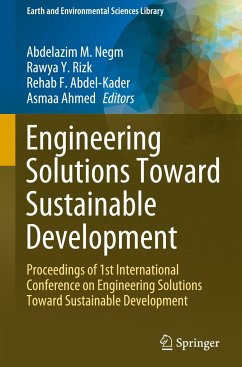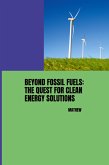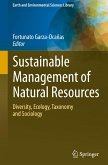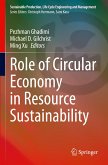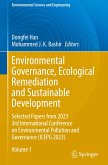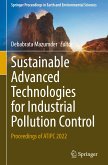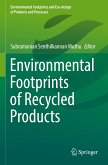Engineering Solutions Toward Sustainable Development
Proceedings of 1st International Conference on Engineering Solutions Toward Sustainable Development
Herausgegeben:Negm, Abdelazim M.; Rizk, Rawya Y.; Abdel-Kader, Rehab F.; Ahmed, Asmaa
Engineering Solutions Toward Sustainable Development
Proceedings of 1st International Conference on Engineering Solutions Toward Sustainable Development
Herausgegeben:Negm, Abdelazim M.; Rizk, Rawya Y.; Abdel-Kader, Rehab F.; Ahmed, Asmaa
- Gebundenes Buch
- Merkliste
- Auf die Merkliste
- Bewerten Bewerten
- Teilen
- Produkt teilen
- Produkterinnerung
- Produkterinnerung
This book constitutes the referred proceeding of the 1st International Conference on Engineering Solutions Toward Sustainable development (ESSD2023), organized by the Faculty of Engineering, Port Said University and held in Port Said, Egypt, during May 2-3, 2023.
The book is devoted to fulfill the need for sustainable development that has never been more urgent. It shows the crucial role of engineering to play in this transition from consumption culture to responsible culture. This book explores the relationship between engineering and sustainability, highlighting the vital role that…mehr
Andere Kunden interessierten sich auch für
![Beyond Fossil Fuels: The Quest for Clean Energy Solutions Beyond Fossil Fuels: The Quest for Clean Energy Solutions]() MathewBeyond Fossil Fuels: The Quest for Clean Energy Solutions28,69 €
MathewBeyond Fossil Fuels: The Quest for Clean Energy Solutions28,69 €![Sustainable Management of Natural Resources Sustainable Management of Natural Resources]() Sustainable Management of Natural Resources116,99 €
Sustainable Management of Natural Resources116,99 €![Role of Circular Economy in Resource Sustainability Role of Circular Economy in Resource Sustainability]() Role of Circular Economy in Resource Sustainability116,99 €
Role of Circular Economy in Resource Sustainability116,99 €![Environmental Governance, Ecological Remediation and Sustainable Development Environmental Governance, Ecological Remediation and Sustainable Development]() Environmental Governance, Ecological Remediation and Sustainable Development157,99 €
Environmental Governance, Ecological Remediation and Sustainable Development157,99 €![Sustainable Advanced Technologies for Industrial Pollution Control Sustainable Advanced Technologies for Industrial Pollution Control]() Sustainable Advanced Technologies for Industrial Pollution Control154,99 €
Sustainable Advanced Technologies for Industrial Pollution Control154,99 €![Environmental Footprints of Recycled Products Environmental Footprints of Recycled Products]() Environmental Footprints of Recycled Products62,99 €
Environmental Footprints of Recycled Products62,99 €![SA's Struggle: Poverty, Inequality, Solutions SA's Struggle: Poverty, Inequality, Solutions]() Daniel AlmeidaSA's Struggle: Poverty, Inequality, Solutions23,00 €
Daniel AlmeidaSA's Struggle: Poverty, Inequality, Solutions23,00 €-
-
-
This book constitutes the referred proceeding of the 1st International Conference on Engineering Solutions Toward Sustainable development (ESSD2023), organized by the Faculty of Engineering, Port Said University and held in Port Said, Egypt, during May 2-3, 2023.
The book is devoted to fulfill the need for sustainable development that has never been more urgent. It shows the crucial role of engineering to play in this transition from consumption culture to responsible culture. This book explores the relationship between engineering and sustainability, highlighting the vital role that engineering plays in achieving sustainable development. The book provides a comprehensive guide for engineers, researchers, and experts from different disciplines that are interested in sustainable development. From renewable energy sources to green infrastructure, the book delves into the latest technological advancements providing insights and practical strategies for designing and implementing sustainable solutions. With practical examples and case studies, readers will gain a deep understanding of how engineering principles and practices can be harnessed to develop sustainable solutions that balance economic, social, and environmental needs and to mitigate the negative impacts of human activity on our planet. The books is very useful for graduate students, researchers, policy planners, decision makers and stakeholders in the field of renewable energy, clean water development, climate actions, smart cities and communities and green infrastructures.
The book is devoted to fulfill the need for sustainable development that has never been more urgent. It shows the crucial role of engineering to play in this transition from consumption culture to responsible culture. This book explores the relationship between engineering and sustainability, highlighting the vital role that engineering plays in achieving sustainable development. The book provides a comprehensive guide for engineers, researchers, and experts from different disciplines that are interested in sustainable development. From renewable energy sources to green infrastructure, the book delves into the latest technological advancements providing insights and practical strategies for designing and implementing sustainable solutions. With practical examples and case studies, readers will gain a deep understanding of how engineering principles and practices can be harnessed to develop sustainable solutions that balance economic, social, and environmental needs and to mitigate the negative impacts of human activity on our planet. The books is very useful for graduate students, researchers, policy planners, decision makers and stakeholders in the field of renewable energy, clean water development, climate actions, smart cities and communities and green infrastructures.
Produktdetails
- Produktdetails
- Earth and Environmental Sciences Library
- Verlag: Springer / Springer Nature Switzerland / Springer, Berlin
- Artikelnr. des Verlages: 978-3-031-46490-4
- 1st edition 2024
- Seitenzahl: 864
- Erscheinungstermin: 17. Januar 2024
- Englisch
- Abmessung: 241mm x 160mm x 49mm
- Gewicht: 1600g
- ISBN-13: 9783031464904
- ISBN-10: 3031464907
- Artikelnr.: 68910310
- Herstellerkennzeichnung Die Herstellerinformationen sind derzeit nicht verfügbar.
- Earth and Environmental Sciences Library
- Verlag: Springer / Springer Nature Switzerland / Springer, Berlin
- Artikelnr. des Verlages: 978-3-031-46490-4
- 1st edition 2024
- Seitenzahl: 864
- Erscheinungstermin: 17. Januar 2024
- Englisch
- Abmessung: 241mm x 160mm x 49mm
- Gewicht: 1600g
- ISBN-13: 9783031464904
- ISBN-10: 3031464907
- Artikelnr.: 68910310
- Herstellerkennzeichnung Die Herstellerinformationen sind derzeit nicht verfügbar.
Prof. Abdelazim Negm is a Professor of Hydraulics (and Water Resources) at the Faculty of Engineering, Zagazig University, Egypt, since 2004. He got his Ph.D. in 1992 from Zagazig University (ZU), and his M.Sc. from Ain shams University in the year 1990. He was the Vice Dean of the Faculty of Engineering of ZU from 12/2008 to 12/2011 and was the head of the Environmental Engineering Department at Egypt-Japan University of Science and Technology (E-JUST), Egypt, from October 2013 to March 2016. He participated in several international projects from 2006 until now and led other international projects. He published more than 400 papers in national and international journals and conferences and contributed to more than 50 book chapters that have been published by Springer Publishing House. Some of his papers were awarded the prize of the best papers. He is the editor of more than 40 Springer books with 14 volumes published in the Springer Handbook of Environmental Chemistry Series (HEC Series) and he is the editor of the Springer book series` titled "Earth and Environmental Science Library Series" and "Deltas of the World Book Series" He is a member of the scientific committee of several international conferences and a member of organizing committee of others and participated in more than 99 conferences as well. He delivered several keynote talks at international conferences. Prof. Negm is a reviewer of more than 50 international scientific journals indexed in Scopus and WoS. He was the editor-in-chief of EIJEST during the period of 2017 -2020, an editor of the EMJEI, which is published by Springer, and an associate editor of the Journal of Remote Sensing and Space Sciences and Scientific African Journal, which is published by Elsevier. Also, he is a member of the editorial board of several scientific journals and a guest editor for special issues in several journals. Moreover, he is a member of the editorial board of the famous Springer Series titled Handbook of Environmental Chemistry since 2019. Negm is the head of the permanent scientific committee on Water Resources (committee no.115, Cycle 13), the supreme council of Egyptian Universities, Egypt.. Morover, Prof. Negm is listed in the most famous and prestigious directories in the world including the American Biographical Institute (ABI), Inc, USA, "Marquis Who's Who in the World," 27th Ed., 2010, USA, until now and in IBC's 2000 as an Outstanding Intellectuals of the 21st Century by International Biographical Center, Cambridge, England, since 2011 until the present. He was nominated for various awards by both ABI and IBC during the period 2011 -2012. Prof. Rawya Yehia Rizk is a Professor of Computers and Control in Electrical Engineering Department, Port Said University, Egypt. She is the Vice President of Post Graduate and Research, 2021 till now. She received her BSc, MSc and PhD in Computers and Control Engineering from Suez Canal University in 1991, 1996 and 2001, respectively. She was the Chief Information Officer (CIO) of Port Said University (PSU), 2014 till 2021. She was the Head of Electrical Engineering Department, Port Said University, 2017 till 2021. She was the executive director of PSU Network Infrastructure, Port Said University, 2010 till 2014. She was the manager of CISCO Academy, Faculty of Engineering, Suez Canal University, 2008 till 2010. She was the manager of CISCO Academy, Faculty of Engineering, Port Said University, 2010 till 2021. Her research interest is in computer networking, including mobile networking, cloud computing, IoT, Sensor Networks and the fields of AI including machine learning and deep learning. She is a reviewer in many of international communication and computer journals such as IEEE Intelligent Transportation Sys. Trans., IEEE Access, IET comm., IET sensors, IET Networks, and Journal of Supercomputing. Professor Rehab Abdel-Kader is a Professor of Computer Engineering within the Faculty of Engineering, Port Said University. She earned her Ph.D. degree in Computer Engineering from Auburn University, Alabama, USA, in 2003. Following her doctoral studies, she contributed as an Assistant Professor in the Electrical Engineering department at Georgia Southern University, GA, USA, where she honed her expertise for a span of two years before returning to her home country, Egypt. Professor Abdel-Kader serves as the Vice Dean of Graduate Studies and Research within the Faculty of Engineering at Port Said University. Her scholarly pursuits encompass a strong focus on cutting-edge fields, with a particular emphasis on Artificial Intelligence and Computer Vision. Dr. Asmaa Ahmed is an assistant professor at the Mechanical Power Engineering Department, Port Said University, Egypt. She was a Renewable Energy Ph.D. researcher from 2018 to 2021 at the Environment and Sustainability Institute, University of Exeter, UK. Her Ph.D. was funded by Newton-Mosharafa Fund, which is a UK-Egypt partnership program for postgraduate scholarships. Now, she is involved in several research projects investigating green energy production solutions for climate change mitigation.
Part I: Clean Energy.- Chapter 1. Performance Analysis of a Green Hydrogen Production System in Several Coastal Locations in Egypt.- Chapter 2. An Efficient MPP Tracker Based on Flower Pollination Algorithm to Capture Maximum Power from Proton Exchange Membrane Fuel Cell.- Chapter 3. Experimental Investigation of Two Bio-Inspired MPPT Algorithms for Partially Shaded PV Arrays.- Chapter 4. Recent Progress in Vertical Axis Wind Turbine Research: Modelling and Optimizations.- Chapter 5. Assessment the Use of Water Hyacinth in the Production of Biogas and Fertilizer, Egypt.- Part II: Clean Water.- Chapter 6. Contrasting the Water Consumption Estimation Method: Case of USA and South Africa.- Chapter 7. Water Sensitive Urban Design at Open Green Spaces Using Landscape Information Model (LIM).- Chapter 8. Numerical and Experimental Investigation on Integrated Solar Chimney for Seawater Desalination System in Egypt.- Chapter 9. Low-Cost Filter Media for Removal of Hazardous Pollutants fromIndustry Wastewater Effluents.- Chatper 10. Removal of Para-Nitrophenol from Industrial Waste Water (IWW) by Adsorption Using Modified Activated Carbon.- Chapter 11. Textile Wastewater Treatment Using a Modified Coal Fly Ash as a Low-Cost Adsorbent.- Chatper 12. Improvement of Net Water Recovery of Reverse Osmosis Membranes in the Water System in Pharmaceutical Industries.- Chatper 13. A Case Study of Thermal Sanitization in Water Process Systems: Implementation of a Cleaner Production Methodology.- Part III: Climate Action.- Chapter 14. A Review of Sustainability Research at Port Said University Towards the Achievement of the Sustainable Development Goals.- Chapter 15. Assessing Climate Change of Western Delta by Regional Climate Models.- Chatper 16. Field Measurements Used to Validate Envi-MET and Conduct Sensitivity Analysis, in Egypt.- Part IV: Smart Cities and Communities.-Chapter 17. Sustainable Development: A Review of Concepts, Domains, Technologies, and Trends in Smart Cities.- Chapter 18. Sustainability of Lap Splice in Externally near Surface Mounted Bars of Reinforced Concrete Beam.- Chapter 19. Architectural Heritage as an Approach for Smart Cities.- Chapter 20. Indoor Daylighting, and Solar Radiation Performance Investigation Utilizing Productive Façades for Residential Buildings.- Chapter 21. Improving Smart Infrastructure Monitoring Systems as a Response to Prevalent Pandemic.- Chapter 22. Meta Approach for COVID-19 Patients Classification from Their Chest X-Ray Images.- Chatper 23. Detecting Pandemics by Using Artificial Intelligent.-Chatper 24. Seizure Detection Using Fast Walsh-Hadamard Transform (FWHT).- Chapter 25. Questions Concerning the Role of the Skycourt as a Passive Strategy to Enhance Energy Efficiency.- Chapter 26. Deep Reinforcement Learning-Based Methods for Resource Scheduling in Virtualized Clouds.- Part V: Industry, Innovation, and Infrastructure.- Chapter 27. In-Situ Fabrication of Poly (M-Phenylene Isophthalamide)/ Fluorographene Nanocomposites and Their Properties.- Chapter 28. Enhanced Performance of Propane Refrigerant at LNG Plant During Hot Climate Conditions - Case Study.- Chapter 29. Examining the Behaviour of Lubricating Oil Film Within Marine Journal Bearing Under Emergency and Critical Operational Conditions.- Chapter 30.Blended Amine for Economic Enhanced Performance of Natural Gas Sweetening Process.- Chapter 31. Optimal Design of Container Ships Geometry Based on Artificial Intelligence Techniques to Reduce Greenhouse Gases Emissions.- Chapter 32. Ship Design for Green Ship Recycling - A New Approach.- Chapter 33. Preferred Level of Servitization in Select Industrial Services.- Chapter 34. Analysis of the Time Multiplexed Sampling and a Proposed Prototype for Effective Heterogenous Data Acquisition Systems.- Chapter 35. Survey and Evaluation of Applied Modern Engineering Pedagogy.- Chapter 36. Preliminary Evaluation of Experiential Learning in Engineering Pedagogy for Undergraduate Students Learning Logic Design Concepts.- Chapter 37. Mode-I Crack Problem in Generalized Thermo-Microstretch with Harmonic Wave Under Three Theories by Using a Laser Pulse with Non-Gaussian Form Temporal Profile.- Chapter 38. The Hysteresis in the Stoner-Wohlfarth Model of Ferromagnetism.- Chapter 39. The Behaviour of the Aluminium Bridges.
Part I: Clean Energy.- Chapter 1. Performance Analysis of a Green Hydrogen Production System in Several Coastal Locations in Egypt.- Chapter 2. An Efficient MPP Tracker Based on Flower Pollination Algorithm to Capture Maximum Power from Proton Exchange Membrane Fuel Cell.- Chapter 3. Experimental Investigation of Two Bio-Inspired MPPT Algorithms for Partially Shaded PV Arrays.- Chapter 4. Recent Progress in Vertical Axis Wind Turbine Research: Modelling and Optimizations.- Chapter 5. Assessment the Use of Water Hyacinth in the Production of Biogas and Fertilizer, Egypt.- Part II: Clean Water.- Chapter 6. Contrasting the Water Consumption Estimation Method: Case of USA and South Africa.- Chapter 7. Water Sensitive Urban Design at Open Green Spaces Using Landscape Information Model (LIM).- Chapter 8. Numerical and Experimental Investigation on Integrated Solar Chimney for Seawater Desalination System in Egypt.- Chapter 9. Low-Cost Filter Media for Removal of Hazardous Pollutants fromIndustry Wastewater Effluents.- Chatper 10. Removal of Para-Nitrophenol from Industrial Waste Water (IWW) by Adsorption Using Modified Activated Carbon.- Chapter 11. Textile Wastewater Treatment Using a Modified Coal Fly Ash as a Low-Cost Adsorbent.- Chatper 12. Improvement of Net Water Recovery of Reverse Osmosis Membranes in the Water System in Pharmaceutical Industries.- Chatper 13. A Case Study of Thermal Sanitization in Water Process Systems: Implementation of a Cleaner Production Methodology.- Part III: Climate Action.- Chapter 14. A Review of Sustainability Research at Port Said University Towards the Achievement of the Sustainable Development Goals.- Chapter 15. Assessing Climate Change of Western Delta by Regional Climate Models.- Chatper 16. Field Measurements Used to Validate Envi-MET and Conduct Sensitivity Analysis, in Egypt.- Part IV: Smart Cities and Communities.-Chapter 17. Sustainable Development: A Review of Concepts, Domains, Technologies, and Trends in Smart Cities.- Chapter 18. Sustainability of Lap Splice in Externally near Surface Mounted Bars of Reinforced Concrete Beam.- Chapter 19. Architectural Heritage as an Approach for Smart Cities.- Chapter 20. Indoor Daylighting, and Solar Radiation Performance Investigation Utilizing Productive Façades for Residential Buildings.- Chapter 21. Improving Smart Infrastructure Monitoring Systems as a Response to Prevalent Pandemic.- Chapter 22. Meta Approach for COVID-19 Patients Classification from Their Chest X-Ray Images.- Chatper 23. Detecting Pandemics by Using Artificial Intelligent.-Chatper 24. Seizure Detection Using Fast Walsh-Hadamard Transform (FWHT).- Chapter 25. Questions Concerning the Role of the Skycourt as a Passive Strategy to Enhance Energy Efficiency.- Chapter 26. Deep Reinforcement Learning-Based Methods for Resource Scheduling in Virtualized Clouds.- Part V: Industry, Innovation, and Infrastructure.- Chapter 27. In-Situ Fabrication of Poly (M-Phenylene Isophthalamide)/ Fluorographene Nanocomposites and Their Properties.- Chapter 28. Enhanced Performance of Propane Refrigerant at LNG Plant During Hot Climate Conditions - Case Study.- Chapter 29. Examining the Behaviour of Lubricating Oil Film Within Marine Journal Bearing Under Emergency and Critical Operational Conditions.- Chapter 30.Blended Amine for Economic Enhanced Performance of Natural Gas Sweetening Process.- Chapter 31. Optimal Design of Container Ships Geometry Based on Artificial Intelligence Techniques to Reduce Greenhouse Gases Emissions.- Chapter 32. Ship Design for Green Ship Recycling - A New Approach.- Chapter 33. Preferred Level of Servitization in Select Industrial Services.- Chapter 34. Analysis of the Time Multiplexed Sampling and a Proposed Prototype for Effective Heterogenous Data Acquisition Systems.- Chapter 35. Survey and Evaluation of Applied Modern Engineering Pedagogy.- Chapter 36. Preliminary Evaluation of Experiential Learning in Engineering Pedagogy for Undergraduate Students Learning Logic Design Concepts.- Chapter 37. Mode-I Crack Problem in Generalized Thermo-Microstretch with Harmonic Wave Under Three Theories by Using a Laser Pulse with Non-Gaussian Form Temporal Profile.- Chapter 38. The Hysteresis in the Stoner-Wohlfarth Model of Ferromagnetism.- Chapter 39. The Behaviour of the Aluminium Bridges.

